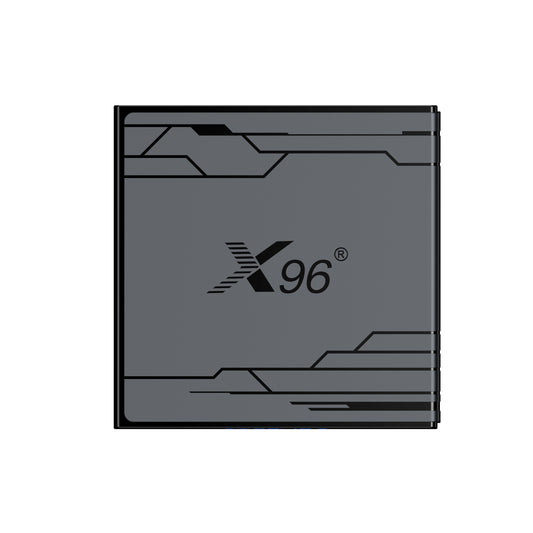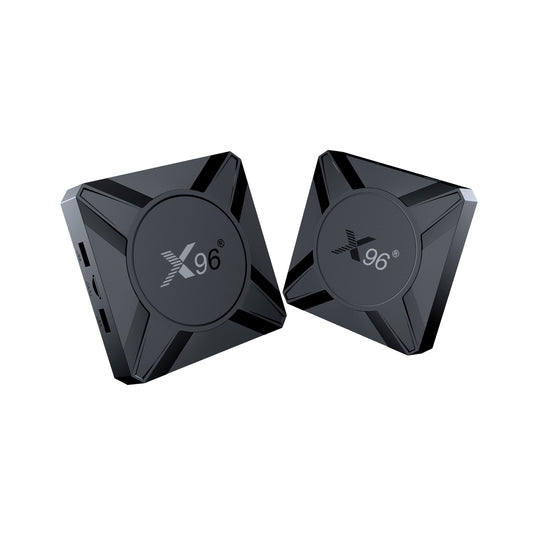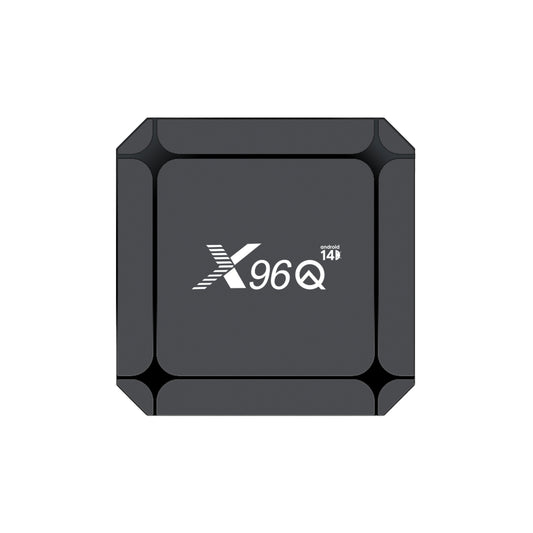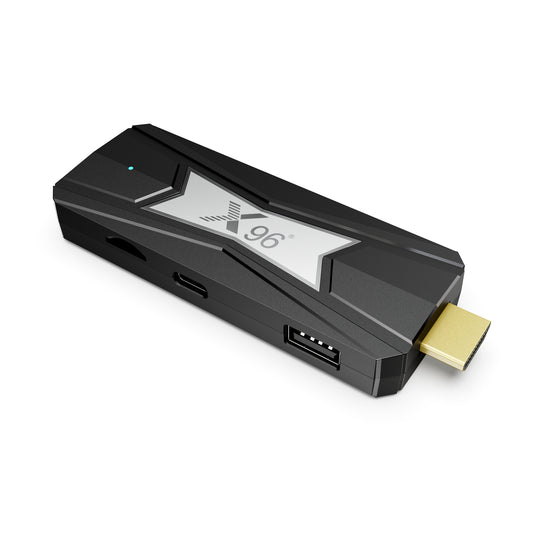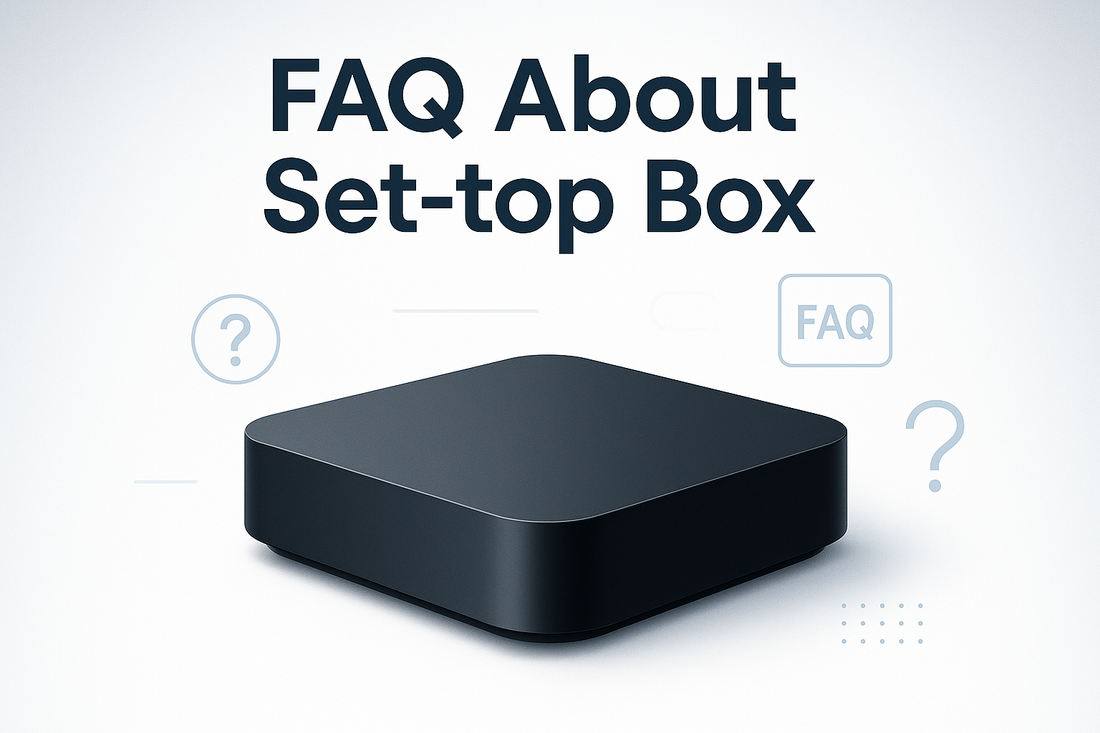
What Is An Android Set-top Box?——Set-top Box FAQs
What is a Set-top Box? Why choose an Android Set-top Box? And is a Set-top Box still needed for a smart TV? These are just a few of the questions we answer in your ultimate guide to modern television hardware. Journey with us as we explore how a powerful Set-top Box works, its key features, and the undeniable benefits of bringing one into your home entertainment setup.
What's A Set-top Box?
Think of your television as a brilliant display, but one that doesn't inherently know how to get all the channels and streaming services you love. This is where the set-top box comes in. It acts as the "brain" behind your TV, a dedicated device that connects to your television and takes care of the complex job of fetching and processing content for you.
In practical terms, when you subscribe to a service—be it traditional cable/satellite TV or modern internet-based streaming—the signals from these providers are not in a format your TV can immediately understand. The set-top box's primary role is to **receive these signals (via a cable, satellite dish, or your home Wi-Fi), decode or decrypt them, and convert them into a video and audio stream that plays seamlessly on your screen.
But a modern set-top box does much more than just translate signals. It's the central command center for your entertainment experience. It provides you with an electronic program guide (EPG) so you can easily see what's on and what's coming up. It runs the apps for your favorite streaming platforms like Netflix, YouTube, and Disney+, and it comes with a remote control that lets you navigate through all this content with a simple, unified interface.
So, whether you have an older "dumb" TV that needs smart capabilities or a newer smart TV whose built-in system has become slow and outdated, a set-top box is the key to unlocking a vast, organized, and high-quality world of entertainment right from your couch.
How does Set-top box work?
Think of your TV as a display, and the set-top box as its brain. Here's a simple breakdown of what it does:
-
It Receives: The box connects to a content source, like your internet (via Wi-Fi) or a cable line. This brings in a stream of data containing channels and shows.
-
It Translates: This raw data is often compressed and scrambled. The set-top box decodes this information, turning it into a video and audio format your TV can understand.
-
It Delivers: Finally, it sends the perfectly formatted picture and sound to your TV through an HDMI cable.
In short, you use the remote to tell the set-top box what to watch, it does all the technical work behind the scenes, and your TV simply displays the result. It's a dedicated device that manages your entertainment for you.
What are the features of a digital Set-top box?
When choosing a digital set-top box, its key features are the specs you compare. Here’s what to look for:
1. Resolution Support: This determines your picture clarity. Look for HD (1080p), 4K Ultra HD, or even 8K to ensure the box can deliver the best quality your TV supports.
2. HDR Technology: For a better viewing experience with richer colors and contrast, check for HDR formats like HDR10 or Dolby Vision.
3. Processor & RAM: A powerful CPU and sufficient RAM (e.g., 2GB+) ensure smooth and fast menu navigation, quick app launches, and a lag-free experience.
4.Connectivity: Essential ports include HDMI for video output, USB for playing local media files, and Ethernet for a stable wired internet connection.
5. Audio Output: For home theater systems, look for support for Dolby Atmos or DTS sound through HDMI or optical audio ports.
6. Storage: Internal storage (e.g., 8GB/16GB) determines how many apps you can install. Some boxes allow expansion via a microSD card.
Is a set-top box needed for a smart TV?
Not always, but often. It primarily serves as a powerful upgrade.
For Basic Use: No. A smart TV has its own built-in operating system and apps (like Netflix, YouTube) to access streaming services directly, so a set-top box is not essential.
For a Better Experience: Yes, and here’s why:
Performance: Smart TV processors can become slow over time. A modern set-top box often has more powerful hardware, making apps launch faster and run smoother.
More Content & Apps: It provides access to a different and often wider ecosystem of apps (e.g., the Google Play Store on an Android TV box) that may not be available on your TV's native platform.
Interface Upgrade: It replaces your TV's potentially clunky or ad-heavy smart interface with a cleaner, more customizable one.
What are the benefits of using a smart set-top box?
A smart set-top box transforms any TV into a powerful entertainment hub. Here are the key benefits:
1. Future-Proofs Your TV: Instead of replacing your entire TV when its built-in smart system becomes slow or outdated, you can simply upgrade the set-top box. This is a much more cost-effective way to keep up with new technologies and apps.
2. Access to a Vast App Ecosystem: It opens up a much wider world of applications via official stores like the Google Play Store, giving you more streaming options, games, and utility apps than most native smart TV platforms.
3. Superior Performance: Smart set-top boxes often have more powerful processors and more RAM than the components inside a smart TV. This results in a noticeably faster, smoother, and more responsive user interface with quicker app loading times.
4. A Unified Entertainment Center: It consolidates all your content. You can access live TV, every major streaming service (Netflix, Prime Video, etc.), and even your personal media library from a single device and a single remote, eliminating the need to switch between different inputs or interfaces.
5. Enhanced Features & Customization: Many smart set-top boxes offer advanced features not found on standard smart TVs, such as voice control via Google Assistant, the ability to sideload apps, and a highly customizable home screen to suit your preferences.
What Is An Android Based Set-top Box?
An Android-based set-top box is a device that runs on the Android operating system, specifically optimized for televisions. The key difference lies not in the core system—since Android itself is built on a Linux kernel—but in the user experience and ecosystem.
Think of it this way:
A Linux-based Set-top Box typically runs a custom, proprietary system developed by a cable or satellite company. It's a "walled garden." Its functions are strictly defined—like decoding pay-TV signals and displaying an electronic program guide. You can't freely install new apps like Netflix or games; the experience is locked down to what the provider allows.
An Android TV-based Set-top Box uses the familiar, open Android platform. This is an "open playground." It gives you direct access to the Google Play Store, allowing you to download a vast array of streaming apps, games, and utilities. The interface is the customizable Android TV (or Google TV) home screen, putting all your content from different services in one place.
In short: The main difference is freedom and flexibility. A Linux box does a specific job well, while an Android box transforms your TV into a versatile smart entertainment center that you can customize to your liking.
How to choose a reliable set-top box manufacturing supplier?

When selecting a reliable set-top box manufacturing supplier, especially for businesses aiming to ensure product quality and smooth market entry, a comprehensive evaluation system is essential. Shenzhen Amedia Technology Co., Ltd, the company behind the popular X96 series of Android TV boxes (with official website: https://x96mini.com/), exemplifies many of the qualities you should look for.
Here is a structured approach to guide your decision, highlighting how a supplier like Amedia meets these criteria.
✅ A Practical Checklist for Evaluating Your Supplier
1. Sample Verification and Product Quality
Before any large order, always test product samples. This helps verify real-world performance, build quality, and software stability. Reputable suppliers encourage this step. As one experienced buyer notes, testing samples is crucial for quality assurance and building trust before committing to large orders. You can evaluate the X96 models for their performance in various configurations, such as the X96 Max+ with its Amlogic S905X4 chip supporting 8K resolution, or the compact X96 Mini.
2. Customization and Innovation Capability
Your supplier should be a partner that can adapt to market trends. Assess their ability to offer customized solutions, from hardware alterations to software pre-loads.
3. Hardware Customization: Look for options to modify RAM, internal storage (ROM), or pre-install specific software and interfaces to create a unique user experience. This is common for the X96 series, with variants offering different RAM and storage combinations.
4. Software & Branding: Suppliers should support adding your logo, custom firmware, or pre-installing specific applications. This is key for businesses looking to build their own brand.
5. Production Capacity and Supply Chain Stability
Ensure the supplier can meet your demand on time. Inquire about their factory's Monthly Production Capacity and track record for on-time delivery. A robust supply chain is vital to avoid delays, especially during peak seasons or promotions. Amedia's association with the widely available X96 series suggests a solid production and distribution network.
6. Technical Support and After-Sales Service
Reliable after-sales support is non-negotiable. A good supplier provides clear warranty terms, responsive technical support, and comprehensive service policies. This includes a defined warranty period and a responsive channel for troubleshooting. For instance, some electronics companies in the region offer a "one-year warranty for the whole machine, three years for major components" and maintain a 24/7 customer service hotline. Ensure your supplier provides a similarly robust service framework.
7. Certifications and Compliance
For exporting to different regions, verify that the products hold the necessary international certifications, such as CE, FCC, or others relevant to your target market. This ensures the devices meet local safety and quality standards and avoids potential legal issues.
8. Cost-Effectiveness and Value
While price is important, the cheapest option can sometimes lead to higher costs due to quality issues or returns. A value-oriented supplier offers a good balance of cost, quality, and reliability, ensuring your long-term profitability.
Why Shenzhen Amedia Technology Co., Ltd. Stands Out
Shenzhen Amedia Technology Co., Ltd. demonstrates strong capabilities as a potential partner:
Proven Product Line: The widespread availability and variety of the X96 series (like the X96 Max+, X96 Mini, and X96Q) showcase their experience in manufacturing and iterating on popular product designs.
Demonstrated Customization: The various configurations of RAM, ROM, and connectivity options available for the X96 models are a testament to their flexibility in hardware customization to meet different market needs.
Market Adaptability: By offering models with different chipsets (Amlogic, Allwinner, Rockchip) and Android versions, they show an ability to adapt to component availability and evolving software standards.
Finding the right manufacturing partner is a strategic step. By thoroughly evaluating suppliers against these key criteria, you can build a successful and sustainable business in the competitive set-top box market. The most reliable path is to start with a sample order to personally validate the product and the supplier's service quality.

